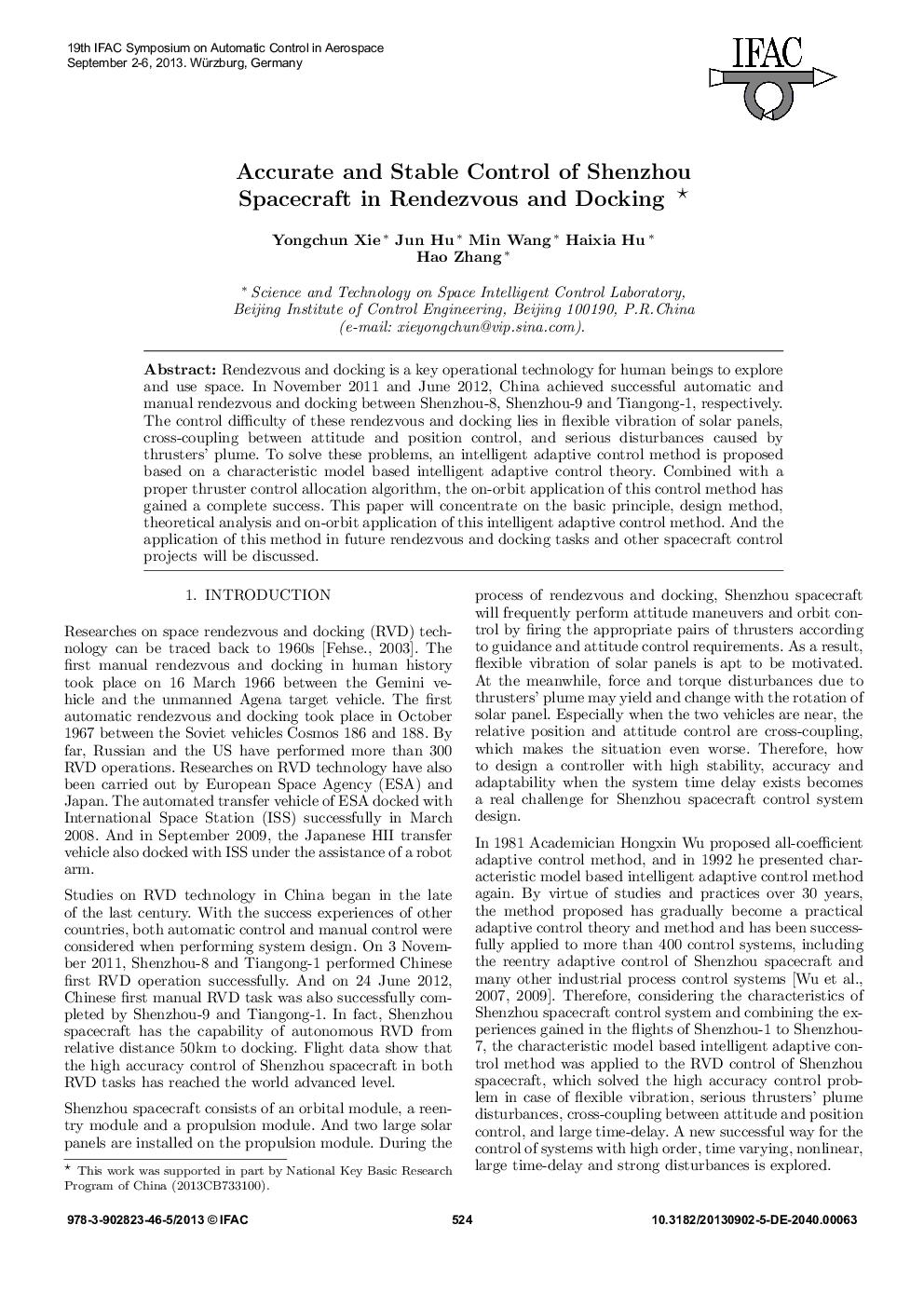| Article ID | Journal | Published Year | Pages | File Type |
|---|---|---|---|---|
| 709215 | IFAC Proceedings Volumes | 2013 | 5 Pages |
Rendezvous and docking is a key operational technology for human beings to explore and use space. In November 2011 and June 2012, China achieved successful automatic and manual rendezvous and docking between Shenzhou-8, Shenzhou-9 and Tiangong-1, respectively. The control difficulty of these rendezvous and docking lies in flexible vibration of solar panels, cross-coupling between attitude and position control, and serious disturbances caused by thrusters’ plume. To solve these problems, an intelligent adaptive control method is proposed based on a characteristic model based intelligent adaptive control theory. Combined with a proper thruster control allocation algorithm, the on-orbit application of this control method has gained a complete success. This paper will concentrate on the basic principle, design method, theoretical analysis and on-orbit application of this intelligent adaptive control method. And the application of this method in future rendezvous and docking tasks and other spacecraft control projects will be discussed.
